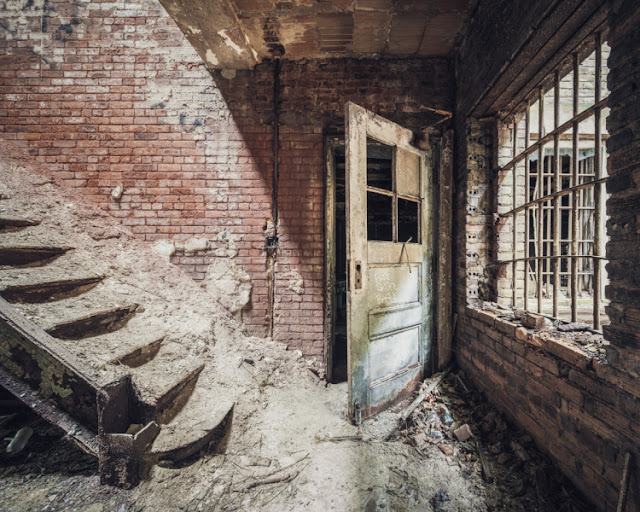The final week of 2016 is here, which means it's time to remember 16 deserted places we discovered during the last year. As always, some of these posts are the ones most viewed by you, while other are my personal favorites.
2016 was a great year for this blog as we managed to post more photos of deserted places than ever before. A record of 75 posts, which is about 1.5 posts per week.
Many of those posts (when possible) had a link to Google Maps so you can do your own (online or offline) exploring. Similar links were added to posts dating back to 2012.
Moreover, a promise we gave years ago became reality at last. An index of all deserted places we've explored, arranged by location and type.
Once more, I'd like to thank you for your visits, comments, suggestions, and for sharing our posts with your friends.
2017 is going to be the 5th year of this blog, and we're determined to make it a good one.
Wishing you all a happier and healthier 2017!
Alex.
1. A semi-submerged church in northern Italy
In 1950, the Italian town of Graun im Vinschgau (Curon Venosta) had to be submerged to create the artificial Reschensee lake (Lago di Resia). The town's tallest structure, the steeple of a 14th-century church is still visible all year round and can be even visited on foot when the lake freezes during the winter months. (More photos)
2. Tour the abandoned Star Wars film sets in Tunisia
George Lucas went to the Tunisian desert to shoot many scenes for his Star Wars movie franchise. Most of the sets are in relatively good state having survived the threat of ISIS, and are visited every year by hundreds of Star Wars movie fans. (More photos)
3. Michigan Central Station: The most iconic abandoned building of Detroit
Michigan Central Station opened its doors in 1914, being the tallest railway station in the world. Initially, more than 200 trains would depart each day but after World War II railway's decline began. Amtrak made many efforts to revive the station in the 1970's and 80's until it shut down in 1988. (More photos)
4. The legendary TWA Flight Center terminal of JFK airport
Designed by the famous Finnish-American architect Eero Saarinen, the TWA Flight Center Terminal of JFK airport in New York City, opened in 1962 for the exclusive use of Trans Air Airlines. Although it was considered revolutionary for its time, the arrival of jumbo jets and the increase of passenger volume, made it inadequate. The terminal shut down in 2001 and has been abandoned since. (More photos)
5. Inside an abandoned Belgian power plant
Power Plant IM opened in 1921 in the Belgian city of Charleroi. It was one of the largest coal burning power plants in Belgium but also one of the largest polluters, responsible for 10% of the country's carbon dioxide emissions. It has been abandoned since 2007. (More photos)












































